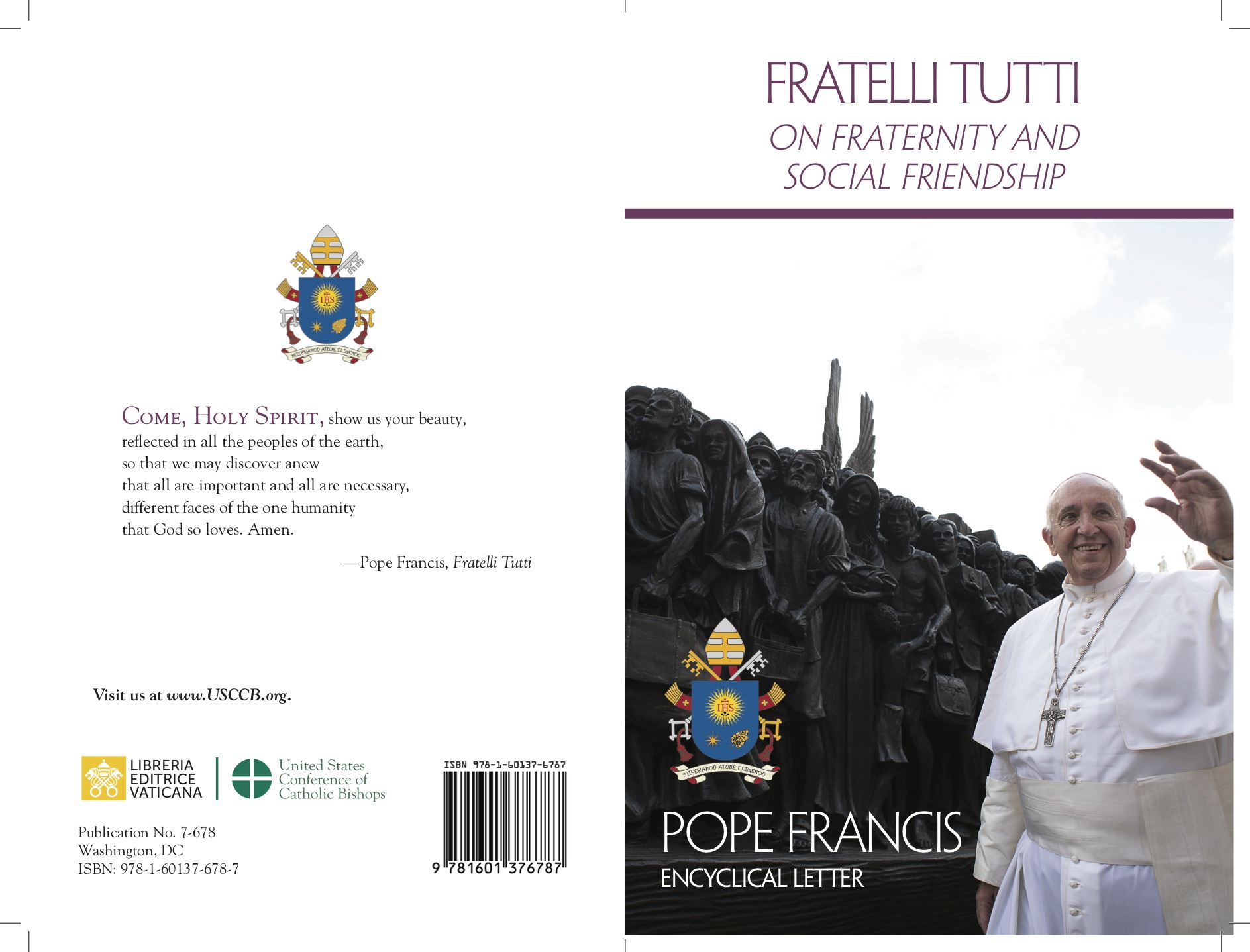The Holy Door

On December 24, an elderly Pope will, and not without difficulty but with determination, pass through the Holy Door of St Peter’s Basilica. The door is called “holy”, and was walled up after the previous jubilee, which was the extraordinary one that opened on November 29, 2015. This had been to celebrate the 50th anniversary of the Second Vatican Council and was dedicated to mercy.
The symbolic power of this gesture cannot be underestimated. Francis will tear down that wall and enter the basilica. Today, the Holy Door represents the heart of Catholicism, first and foremost, but not only, because everyone is invited to do as he will do for the entire year, to enter, if not physically, at least in the communion of intent that governs the course of the Jubilee Year.
This time, since it is an ordinary Jubilee and not an extraordinary one, alongside the Holy Door of St Peter’s and those of the other three Roman basilicas, Francis will open another door, the door of a prison. A place where -precisely because it cannot be physically crossed-, powerfully evokes the need for liberation.
On the other hand, at the foundation of the Christian revival of the Jewish Jubilee praxis, are perhaps the words of the prophet Isaiah, which Jesus, in his discourse with which he inaugurated his messianic mission in the synagogue of Nazareth, refers to himself? The prophet had said, “The Spirit of the Lord is upon me; for this reason, he has anointed me and sent me to bring good news to the poor, to proclaim freedom for prisoners, and recovery of sight for the blind; to set the oppressed free, to proclaim the year of the Lord’s favor” “The Spirit of the Lord is upon me, because he has anointed me to preach good news to the poor. He has sent me to proclaim release to the captives and recovering of sight to the blind, to set at liberty those who are oppressed,19 to proclaim the acceptable year of the Lord”. (Luke 4:18-19). With that gesture, and at that door, therefore, the Pope and with him the whole Church, do not enter only into a space recognized as sacred, but also into a time recognized as holy, into a “year of grace”.
The Sanctification of Time
The Jubilee year is one of the many legacies Christianity owes to Judaism, particularly its grand vision of the sanctification of time. For human beings, time and space represents, the quintessential vital situation. However, it also represents the great adversary because it erodes life and brings it closer to death. On the other hand, does the god of time, Saturn/Cronus, not belong to the pantheon of pagan deities, the son of Heaven and Mother Earth, who devours his own children? With the “invention” of the Sabbath, that is, the distinction between time reserved for human work and time reserved for God, Israel performed a decisive operation: humans are not dominated by time, but they themselves dominate it when they recognize that God is the lord of time because He has imprinted in His creation the law of alternation between activity and rest. In short, there is someone stronger than time, and He is the only one who can even “redeem” time because, with the gift of life that does not die, He comes to take away death’s “sting”, as Paul writes to the Corinthians (1 Corinthians 15:55).
The seventh day, the Sabbath, as well as the sabbatical year, which occurred every seven years, sanctified the passage of days, weeks, and months. Later, the institution of the Jubilee year further reinforced the sabbatical scheme, even anchoring it to a measure of time that was greatly extended. “the land shall keep a sabbath to the Lord. Six years you shall sow your field, and six years you shall prune your vineyard, and gather in its fruits; but in the seventh year there shall be a sabbath of solemn rest for the land, a sabbath to the Lord […] And you shall count seven weeks[a] of years, seven times seven years, so that the time of the seven weeks of years shall be to you forty-nine years. Then you shall send abroad the loud trumpet on the tenth day of the seventh month; on the day of atonement you shall send abroad the trumpet throughout all your land. And you shall hallow the fiftieth year, and proclaim liberty throughout the land to all its inhabitants […] A jubilee shall that fiftieth year be to you; in it you shall neither sow, nor reap what grows of itself, nor gather the grapes from the undressed vines. For it is a jubilee; it shall be holy to you” (Leviticus 25:1-12).
In the Jubilee year, in short, everything was to return to its origin, that is, be restored into God's hands, the land was left to rest, debts were forgiven, and slaves were freed, and thus the time of history was sanctified.
Whether ancient Israel ever managed to fully observe this regulation, or whether it only represented the ideal of a social model, is a topic of discussion among scholars. However, the fact remains that medieval Christianity and later Roman Catholicism adopted the rule of the Jubilee year after spiritualizing its contours: the forgiveness of the consequences of sins takes the place of the return of the land and history to God, and thus the indispensable mediation of the Church in the attainment of salvation, even eternal salvation, is strongly affirmed. As the Psalmist foretold, it will be God Himself who will cross the gates of time to come and dwell on earth. “Lift up your heads, O gates! and be lifted up, O ancient doors! that the King of glory may come in”. (Psalm 24:7).
I am the door
A reality, a metaphor, a symbol, the door refers to another key dimension of the Jubilee with even greater force, that of the space to be inhabited, whether it is that of the home, the city, the village, or life itself. We do not always realize it, but in our daily lives, we continuously pass through them, opening and closing them. These are sentinels that ensure the plurality of spaces and the determination of places, doors establish the mapping of our movements and mark our passage, often imperceptibly.
Heavy or light, made of gold like those of the Kremlin or of fabric like those found in the tents in a refugee camp, doors are also an important metaphor for life and its dynamic ambivalence because they refer to vital actions that determine the quality of the times and spaces in which life unfolds: entering-exiting or opening-closing or even welcoming-driving away. For this reason, the door can also take on the quality of a symbol in religious contexts, as shown by the prominence it is given in one of the key times of the Catholic Church’s life, that of the Jubilee year.
When we explore the symbolic meaning of the “Holy Door”, it is also possible to start from the Bible. Because, as the great book of the God-with-us, the Bible is full of doors that, whether they mark the thresholds of homes or those of cities, point to clear theological meanings. Here, we can mention just two from the Old Testament and one from the New Testament that help us identify possible theological meanings of the Jubilee door.
After the famous dream of the ladder resting on the earth, with its top reaching the heavens, and on which the angels of God ascended and descended, the patriarch Jacob recognizes that the place where one experiences God must be consecrated to Him. It thus loses its ordinary meaning to become the place of God's presence, that is, the place through which one accesses heaven: “How awesome is this place! This is none other than the house of God, and this is the gate of heaven” (Genesis 28:17). The door to the house of God allows entry into an “other” space, where God makes His presence felt, where thoughts become “visions” that reveal the meaning of what we live. Metaphorically, birth and death are the doors through which one enters life and exits from it, and for the Bible, these doors are not unguarded. They do not mechanically determine the passage from before to after, but, as the Psalmist acknowledges, God, the guardian of life, “will keep your going out and your coming in from this time forth and for evermore” (Psalm 121:8).
The doors, however, also guard the passage between the inside and the outside, between the need for a belonging from which one feels protected and the need for a freedom from which one draws vital strength. For this reason, the theologically most significant expression of the symbolic power of the door is the one that takes on a Christological dimension when Jesus identifies it with Himself.
In a discourse from the Gospel of John, which is both suggestive and complex, Jesus first defines Himself as the true shepherd of the flock because, unlike the leaders of the people who are wolves disguised as shepherds, He is the only one who can enter the sheepfold through the door. Then, however, immediately afterwatds, He identifies the door of the sheepfold with Himself: “Truly, truly, I say to you, I am the door of the sheep. All who came before me are thieves and robbers; but the sheep did not heed them”, (John 10:7-8). As always, Jesus reveals His identity as the Messiah only to those who have the ability to look beyond the image, to grasp the symbolic power and the potential to translate into a concrete realization. It is by passing through Him that His flock will be able to exit the sheepfold without fear and enjoy the pasture that keeps it alive; and it is by passing through Him that it will be able to return and protect itself from the wolves.
When the Pope, with the Christmas Eve Mass, inaugurates the Jubilee year by crossing the threshold of the Holy Door, he will also ask his Church to return to God by passing through the only door that gives access to salvation. This is the one revealed by the Son about the Father: “I am the door; if any one enters by me, he will be saved, and will go in and out and find pasture” (John 10:9).
by MARINELLA PERRONI













 Purchase the Encyclical here Fratelli Tutti
Purchase the Encyclical here Fratelli Tutti
